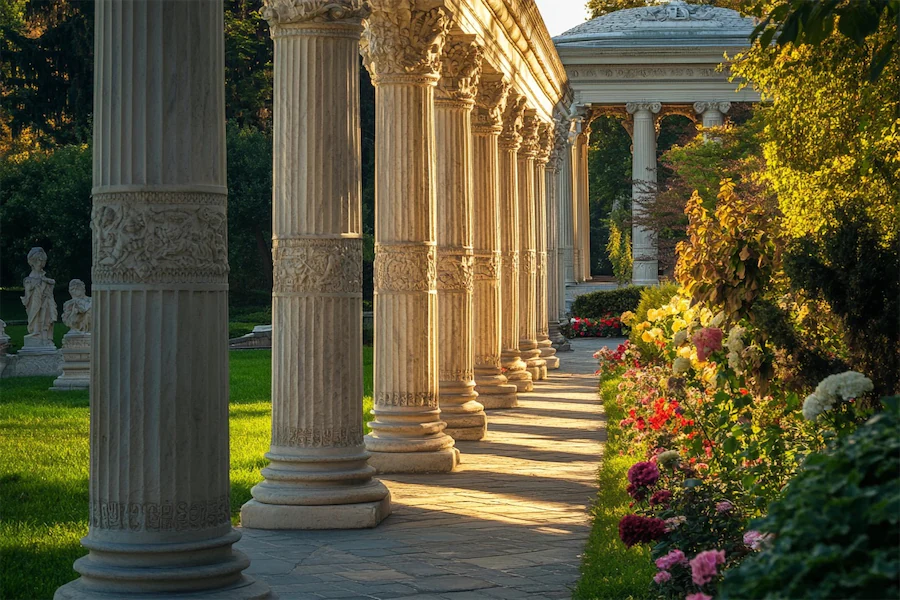Corinthian columns are renowned for their ornate and elaborate design, representing the most decorative of the three principal classical orders of ancient Greek and Roman architecture—the others being Doric and Ionic.
History and Origins of Corinthian Columns
The Corinthian order is believed to have been developed in the mid-5th century BC, with its name derived from the Greek city of Corinth.
According to the Roman architect Vitruvius, the design was inspired by the sight of a basket surrounded by acanthus leaves placed on a young girl’s tomb.
The earliest known example of a Corinthian column is found in the Temple of Apollo Epicurius at Bassae, dating to around 450–420 BC.
Key Features of Corinthian Columns
Corinthian columns are distinguished by several characteristic features:
- Capital: The capital is highly ornate, featuring a bell-shaped design adorned with two rows of acanthus leaves and four scrolls (volutes).
- Shaft: The shaft is slender and fluted, typically with 24 vertical grooves, contributing to an elegant and refined appearance.
- Base: Unlike the Doric order, Corinthian columns rest on an elaborate base, often consisting of stacked moldings that provide a transition between the stylobate (platform) and the shaft.
- Proportions: Corinthian columns are generally more slender than Doric and Ionic columns, with a height-to-diameter ratio of approximately 10:1, imparting a sense of height and grandeur.
Applications of Corinthian Columns
Throughout history, Corinthian columns have been employed in various significant structures:
- Temple of Olympian Zeus: Located in Athens, this monumental temple, completed in the 2nd century AD, featured over 100 Corinthian columns, exemplifying the order’s grandeur.
- Pantheon: In Rome, the Pantheon’s portico is supported by massive Corinthian columns, showcasing the order’s prominence in Roman architecture.
- U.S. Capitol Building: In Washington, D.C., Corinthian columns are utilized in various parts of the Capitol, including the Hall of Columns, reflecting the order’s enduring influence on neoclassical architecture.
Considerations When Choosing Corinthian Columns
When incorporating Corinthian columns into architectural designs, consider the following:
- Aesthetic Appeal: The Corinthian order conveys opulence and sophistication, making it suitable for structures aiming for a grand and decorative appearance.
- Structural Proportions: The slenderness of Corinthian columns requires careful consideration of load-bearing capacities and structural integrity.
- Maintenance: The intricate details of Corinthian capitals may require meticulous maintenance to preserve their ornate features over time.
Conclusion
Corinthian columns epitomize the pinnacle of classical architectural ornamentation, embodying elegance and complexity. Their historical significance and distinctive features continue to influence architectural design, making them a pertinent choice for projects seeking classical grandeur.
